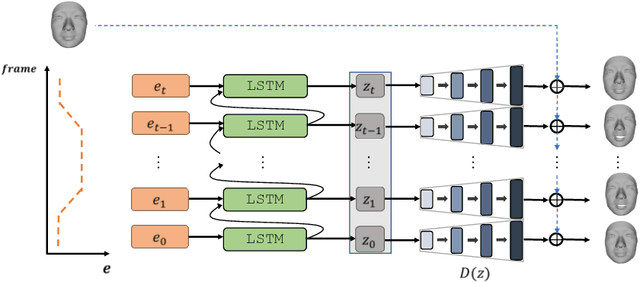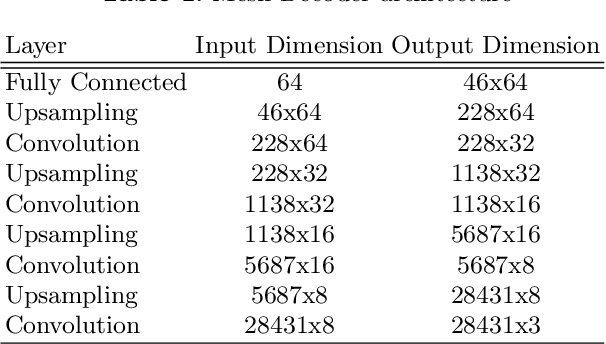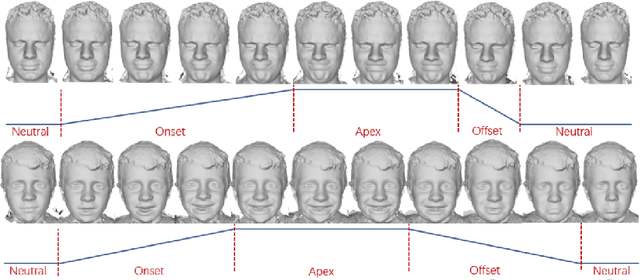Jiali Zheng
Design2Cloth: 3D Cloth Generation from 2D Masks
Apr 03, 2024



Abstract:In recent years, there has been a significant shift in the field of digital avatar research, towards modeling, animating and reconstructing clothed human representations, as a key step towards creating realistic avatars. However, current 3D cloth generation methods are garment specific or trained completely on synthetic data, hence lacking fine details and realism. In this work, we make a step towards automatic realistic garment design and propose Design2Cloth, a high fidelity 3D generative model trained on a real world dataset from more than 2000 subject scans. To provide vital contribution to the fashion industry, we developed a user-friendly adversarial model capable of generating diverse and detailed clothes simply by drawing a 2D cloth mask. Under a series of both qualitative and quantitative experiments, we showcase that Design2Cloth outperforms current state-of-the-art cloth generative models by a large margin. In addition to the generative properties of our network, we showcase that the proposed method can be used to achieve high quality reconstructions from single in-the-wild images and 3D scans. Dataset, code and pre-trained model will become publicly available.
ILSH: The Imperial Light-Stage Head Dataset for Human Head View Synthesis
Oct 06, 2023



Abstract:This paper introduces the Imperial Light-Stage Head (ILSH) dataset, a novel light-stage-captured human head dataset designed to support view synthesis academic challenges for human heads. The ILSH dataset is intended to facilitate diverse approaches, such as scene-specific or generic neural rendering, multiple-view geometry, 3D vision, and computer graphics, to further advance the development of photo-realistic human avatars. This paper details the setup of a light-stage specifically designed to capture high-resolution (4K) human head images and describes the process of addressing challenges (preprocessing, ethical issues) in collecting high-quality data. In addition to the data collection, we address the split of the dataset into train, validation, and test sets. Our goal is to design and support a fair view synthesis challenge task for this novel dataset, such that a similar level of performance can be maintained and expected when using the test set, as when using the validation set. The ILSH dataset consists of 52 subjects captured using 24 cameras with all 82 lighting sources turned on, resulting in a total of 1,248 close-up head images, border masks, and camera pose pairs.
Learning to Generate Customized Dynamic 3D Facial Expressions
Jul 21, 2020



Abstract:Recent advances in deep learning have significantly pushed the state-of-the-art in photorealistic video animation given a single image. In this paper, we extrapolate those advances to the 3D domain, by studying 3D image-to-video translation with a particular focus on 4D facial expressions. Although 3D facial generative models have been widely explored during the past years, 4D animation remains relatively unexplored. To this end, in this study we employ a deep mesh encoder-decoder like architecture to synthesize realistic high resolution facial expressions by using a single neutral frame along with an expression identification. In addition, processing 3D meshes remains a non-trivial task compared to data that live on grid-like structures, such as images. Given the recent progress in mesh processing with graph convolutions, we make use of a recently introduced learnable operator which acts directly on the mesh structure by taking advantage of local vertex orderings. In order to generalize to 4D facial expressions across subjects, we trained our model using a high resolution dataset with 4D scans of six facial expressions from 180 subjects. Experimental results demonstrate that our approach preserves the subject's identity information even for unseen subjects and generates high quality expressions. To the best of our knowledge, this is the first study tackling the problem of 4D facial expression synthesis.
 Add to Chrome
Add to Chrome Add to Firefox
Add to Firefox Add to Edge
Add to Edge